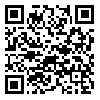BibTeX | RIS | EndNote | Medlars | ProCite | Reference Manager | RefWorks
Send citation to:
URL: http://jdc.tums.ac.ir/article-1-17-en.html
Skin injury caused by burns, surgery and other traumas may result in unpleasant psychological experiences and be reflected in behaviors. Extracellular matrix (ECM) is the largest component of natural skin which is gel-like and is produced by skin cells. ECM synthesis is a key factor for filling up skin wounds such as burns, leishmaniasis, chicken pox, acne, etc. ECM is composed of a variety of polysaccharides, water, and collagen proteins. Considering its weight, natural skin strength and its expandability are like steel, while it has high elasticity and compaction capacities. These characteristics are due to dual effects of main ECM molecules, which are secreted by fibroblasts and epidermal cells: 1) structural fiber proteins like: elastin, fibronectin and laminin which give strength and flexibility to ECM, and 2) proteoglycans such as dermatan sulfate and hyaluronic acid which are consisted of few glycosaminoglycan chains that branch out from a linear protein core. Proteoglycans are large and hydrated molecules which are resistant to external forces and protect underneath cells. In general, understanding the skin structure and wound healing phases can help us to design useful experiments and to conduct proper researches in this area.
Received: 2011/10/23 | Accepted: 2011/12/8 | Published: 2013/07/17
| Rights and permissions | |
 |
This work is licensed under a Creative Commons Attribution-NonCommercial 4.0 International License. |





